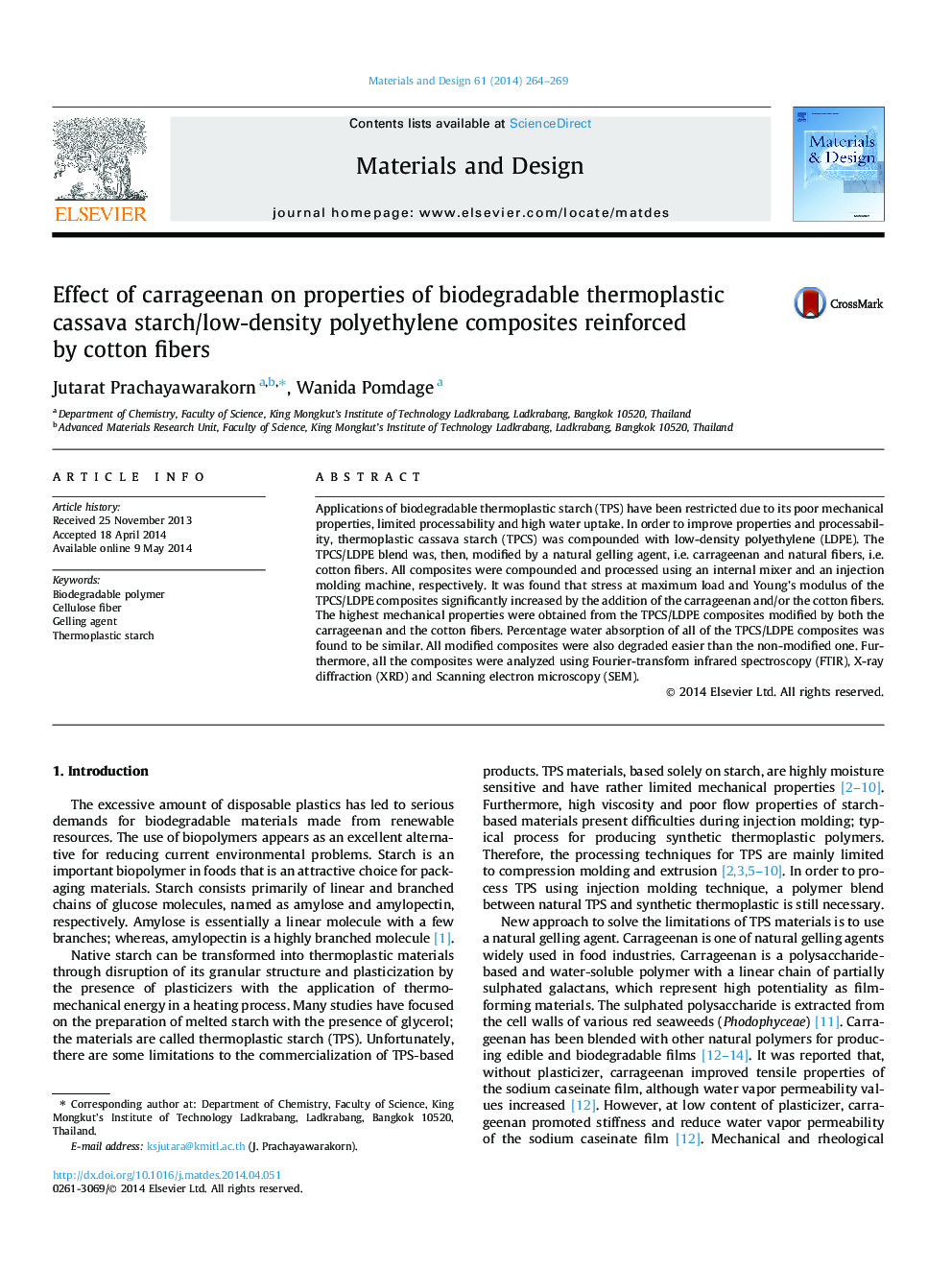| Article ID | Journal | Published Year | Pages | File Type |
|---|---|---|---|---|
| 829156 | Materials & Design (1980-2015) | 2014 | 6 Pages |
•We prepared the TPCS/LDPE composites modified by carrageenan and/or cotton fibers.•The IR O–H stretching peak of the modified composites shifts to lower wavenumber.•Stress and Young’s modulus of the modified composites increase significantly.•The modified composites degrade faster than the non-modified composite.
Applications of biodegradable thermoplastic starch (TPS) have been restricted due to its poor mechanical properties, limited processability and high water uptake. In order to improve properties and processability, thermoplastic cassava starch (TPCS) was compounded with low-density polyethylene (LDPE). The TPCS/LDPE blend was, then, modified by a natural gelling agent, i.e. carrageenan and natural fibers, i.e. cotton fibers. All composites were compounded and processed using an internal mixer and an injection molding machine, respectively. It was found that stress at maximum load and Young’s modulus of the TPCS/LDPE composites significantly increased by the addition of the carrageenan and/or the cotton fibers. The highest mechanical properties were obtained from the TPCS/LDPE composites modified by both the carrageenan and the cotton fibers. Percentage water absorption of all of the TPCS/LDPE composites was found to be similar. All modified composites were also degraded easier than the non-modified one. Furthermore, all the composites were analyzed using Fourier-transform infrared spectroscopy (FTIR), X-ray diffraction (XRD) and Scanning electron microscopy (SEM).
